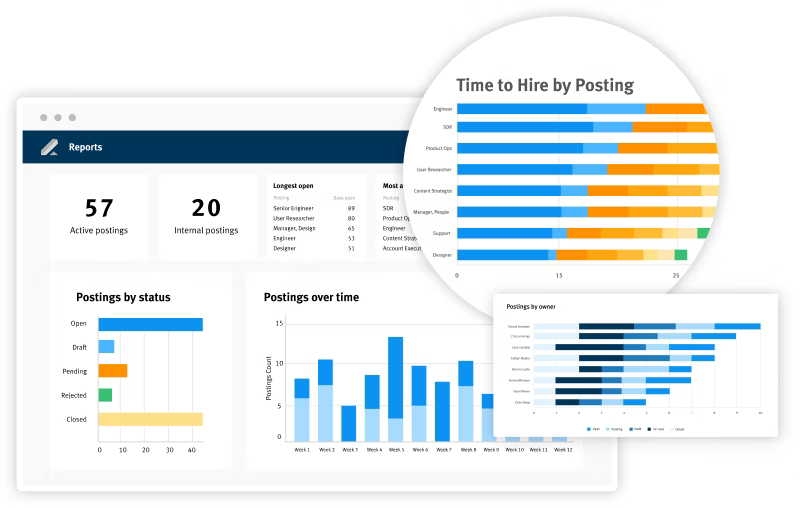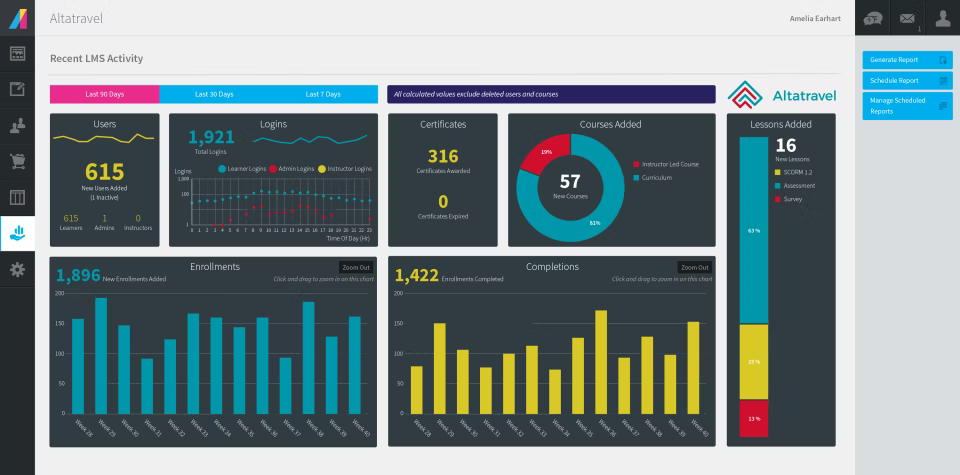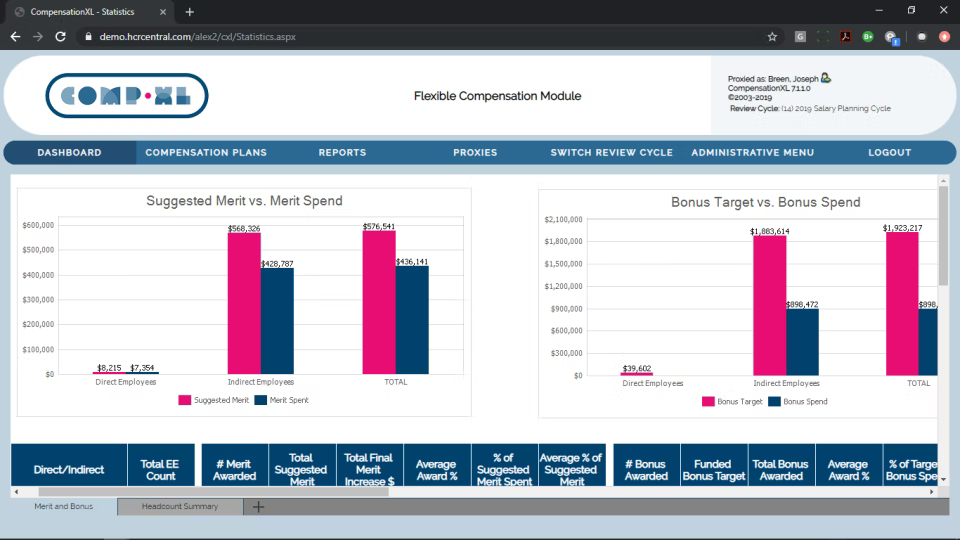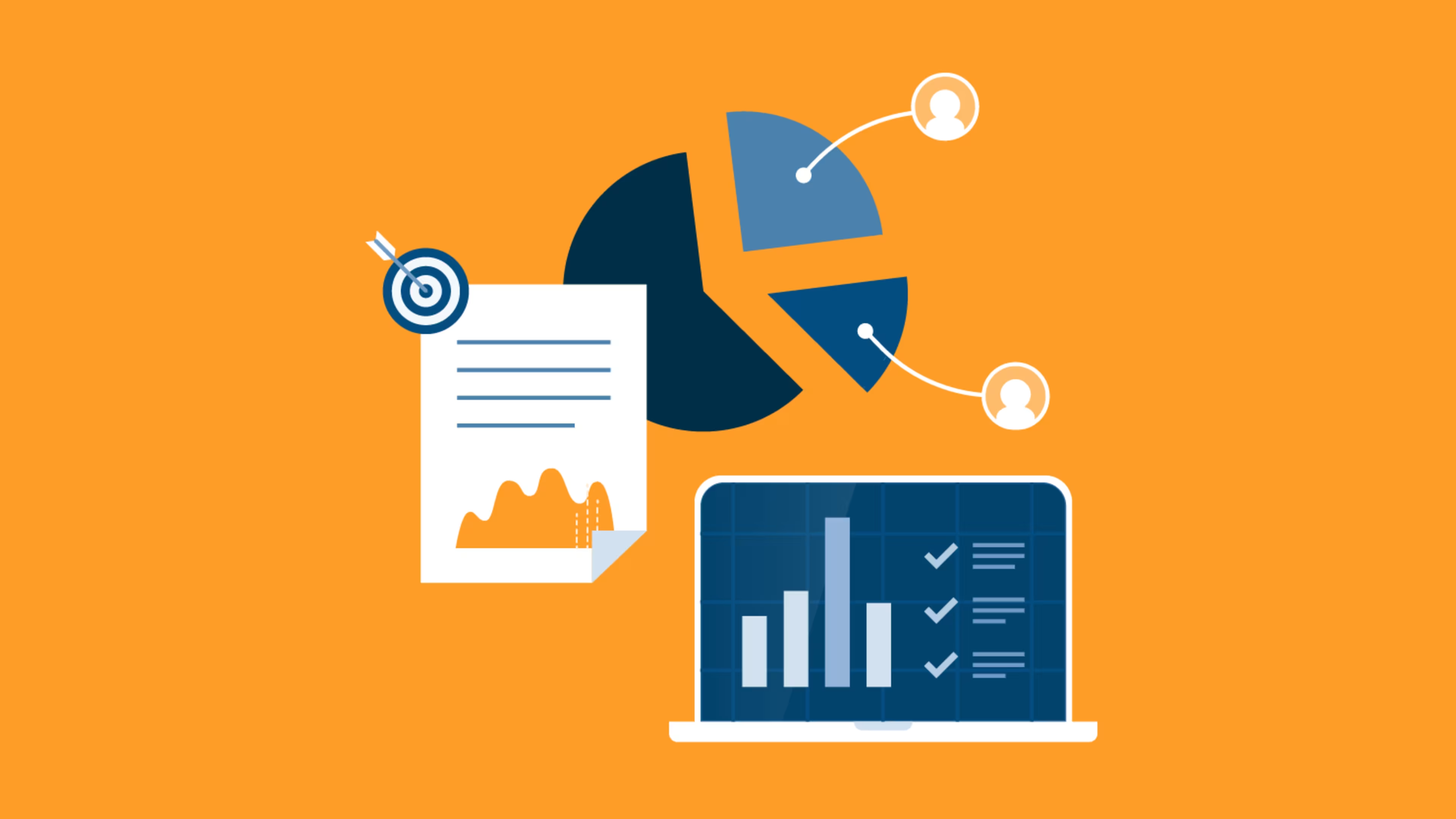Decision-making without data is a thing of the past for human resources leaders.
Human resources (HR) managers have more opportunities than ever to drive business growth, thanks to advancing data collection and management technologies. Data analytics in HR can help HR departments understand a wide range of data, including employee engagement and recruitment metrics. Embracing data analytics can help improve candidate experiences during recruitment journeys, streamline performance management processes, or even enhance training and development programs.
What is data analytics in HR?
Data analytics is the process of examining raw data to identify trends and draw meaningful conclusions. Data analytics in HR is often deployed to help leaders make more informed decisions about the future of their workforce. There are a few notable subtypes of data analytics, all of which may be applicable in HR:
Descriptive analytics: These analytics gather, analyze, and present historical business data via reports, graphs, tables, or other visualizations to help HR teams understand previous and current challenges. This type of analytics examines and describes data to give a picture of "where we are now." Descriptive analytics may be gathered efficiently using business intelligence (BI) tools.
Diagnostic analytics: This goes further, using advanced tools to provide root causes for issues to help prevent the repetition of issues. Diagnostic HR data analytics might gather data from multiple sources, drill further down into existing data, and/or utilize pattern and correlation recognition algorithms. More than 80% of analytics professionals in HR rely on diagnostic analytics.[1]
Predictive HR analytics: Predictive analytics is an advanced strategy that uses techniques such as regression analysis and multivariate statistics that assess how one set of data impacts another, pattern matching, predictive modeling, and forecasting. The goal is to anticipate future challenges and plan mitigations.
Understanding how to analyze HR data and what tools to use can help businesses gain an edge in rapidly crowding markets.
What are the benefits of using data analytics in HR?
While strategic HR planning is still vital to ensure that HR leaders are involved in business decision-making, data-driven HR is rapidly becoming the norm for day-to-day HR responsibilities. Understanding what's happening across an organization and what may happen in the coming months provides HR leaders with the tools they need to make the right decisions about workforce planning, recruitment, and engagement.
Possible benefits of using human resources analytics include:
Increased employee retention
Improved recruitment processes
Higher levels of employee engagement
Better brand reputation via shared employee experiences
Increased productivity and other key performance indicators (KPIs)
More accurate workforce planning, e.g., to cover peak periods or plan for lulls in business
Any aspect of HR management can be influenced by access to the right data and tools that can utilize that data for actionable insights.
What are the different applications of data analytics in HR?
Some of the top responsibilities that can benefit from HR and employee data analytics tools are:
1. Recruiting and hiring
Talent shortages continue to impact recruiters, and the top fields needing more skilled and experienced workers are IT and data.[2] HR data analytics tools could help uncover where your recruiting process can be improved.
For example, you can set hiring goals and see how you're progressing toward them, compare your time-to-fill and cost-per-hire metrics with other industry standards or organizations through benchmarking, and track how your results ebb and flow after adjusting to different aspects of your recruiting strategy.
Predictive data analytics can also anticipate emerging skills in the talent pool, monitor the availability of relevant skills among applicants, and even compare possible volumes of graduates against competitors' vacant positions. This helps recruitment specialists understand exactly where they need to focus their efforts.
/ Pro tip
Track the recruiting data metrics that are a priority for your organization. Many recruiting software platforms offer features such as customizable dashboards as a part of their analytics functionality to help you do this.

A dashboard turns valuable recruiting data into easy-to-understand visualizations (Source)
Businesses across multiple industries onboard recruitment agencies to help ensure their recruitment and hiring strategies are optimized. Effective agencies often utilize their own data collation and BI solutions so they can quickly show their clients how successful recruitment efforts have been over specific periods of time.
Interested in employing a recruitment agency for your business? Browse Capterra's lists of recruitment agencies in the following areas:
2. Employee engagement
Employee data analytics should provide insights into current engagement levels, feedback, performance, and other metrics linked to employee satisfaction. Advanced data analytics in HR tech stacks can predict what will improve employee engagement, suggest challenges that might impact this score, and analyze multiple business facets connected to increased/decreased engagement levels.
For example, data from before and after internal promotion schemes should show clear, historical increases in employee engagement. A deeper analysis might show what aspects of these programs were effective and why, and the likelihood of those programs positively impacting current prospective promotional candidates.
/ Pro tip
There are numerous employee engagement tools, including feedback survey generators, communication tools, and even platforms that encourage whistleblowing. Invest in tools that echo your corporate values and goals.
3. Performance management
From the perspective of the HR department, performance and productivity often refer to how efficiently resources such as talent, money, and time are being used. Data analytics is particularly useful for analyzing historical performance data and predicting future performance. This can help when recommending employees apply for additional responsibilities, and when liaising with training and development specialists who understand where skills gaps lie.
Some performance metrics, such as revenue per full-time employee, help understand individual success and the productivity of your workforce. Other metrics, such as project completion rate, are more useful for measuring the performance of teams. HR data analytics tools can gather all performance KPIs for both real-time reporting and forecasting.
Another HR data analysis example linked to performance management is the application of text analytics to identify employee sentiment. The collation of unstructured data such as comments, key phrases from documents, and any other text can highlight trends in employee satisfaction. A dip in performance could be connected to a poorly planned business process. Discovering insights like this empowers HR leaders to make meaningful changes more easily and efficiently.
/ Pro tip
Encourage department leaders to report on their team's performance. Most businesses today use a collaboration tool or project management platform, and these tools often have reporting features that track everything from communication between employees to missed deadlines.

The status, progress, and priority of different company objectives organized in Asana (Source)
4. Talent training and development
Measuring the effectiveness of internal training and development opportunities is vital to ensure budgets are effectively allocated. An effective way to gauge the impact of training and development programs involves gathering employee feedback through a survey or manager one-on-ones. Beyond this, learning management systems can collect and analyze data relating to the completion and comprehension of programs.
Predictive analytics tools can create personalized employee learning paths and even tailor training content to meet different learning styles.
/ Pro tip
Invest in an LMS that offers different ways to learn and suits multiple learning styles. These may include multiple-choice quizzes, video-based learning, or group-based tasks that encourage a hands-on approach. Ensure your chosen LMS provides data on employee time spent training, individual assessment scores, and more.

A dashboard in Absorb LMS shows learner logins, enrollments, and course completion (Source)
5. Compensation and benefits
One of the biggest expenses for any business is employee compensation. This, coupled with the fact that we're currently in an inflationary environment[3], has made compensation analytics an essential tech stack addition for HR managers.
Advanced analytics can suggest appropriate compensation packages based on market averages, industry specifics, and recruitment statistics. For example, if you need a marketing manager with expertise in social media and data integration, but those skills are rare across the wider talent pool, your tools might recommend increasing the salary you offer. They may also suggest that HR leaders and recruitment specialists offer other benefits that attract applicants, like remote or hybrid working, increased vacation time, or enhanced development opportunities.
Improving benefits packages and aligning them with candidate expectations and needs could significantly reduce your time to recruit.
/ Pro tip
Ask your payroll software vendor about the capabilities of their reporting and insights functionalities. There may be analytics features that can help guide your compensation strategy that you aren't currently taking advantage of.

Compare your planned merit spending with industry trends in CompensationXL (Source)
6. Workplace culture
Workplace culture is how your employees interact with each other, managers, and clients, and how this impacts performance. Culture analytics tools measure workforce sentiment and compare that with organizational goals, suggesting changes that could improve the culture within a facility or even across an entire firm.
Using data analytics in HR scenarios like increased complaints, conflict, or simply reduced employee satisfaction can uncover root causes and allow managers at all levels to take action.
/ Pro tip
Investing in software that gathers feedback from across all areas of your business can help you better understand your workplace culture. Combine HR data analytics solutions with 360-degree feedback platforms for a holistic view of your organization.
7. Diversity and inclusion
Understanding how to analyze HR data could help you foster a more diverse workforce. Data analytics in HR can predict the likelihood of your company meeting its diversity and inclusion (D&I) targets by assessing the composition of the current workforce, hiring trends, and other key data points.
One HR data analysis example of D&I improvement comes from the commercial real estate industry. A financial services firm in this sector used data analytics to create a meaningful story of where the company wanted to be in terms of D&I and how to get there. This included using hiring and promotion data to create models predicting future outcomes based on specific actions. Predictive analytics combined with effective visualization helped this firm increase the number of women in the workforce by 87% and the number of minority groups by 112%.[1]
/ Pro tip
Investing in onboarding software that removes friction from the candidate experience could ensure you retain the diverse talent you work hard to source. Streamline hiring processes with tools that gather candidate information and distribute it to all relevant systems while automatically ensuring access is granted to the right resources once a candidate is hired.
What are some tips for getting the most out of HR analytics?
When data informs your HR department's decision, from recruiting and retention to training and productivity, the outcome will be a much more effective human resources business function.
Use our quick guide to getting started with HR analytics:
Determine where you're at in the process. What is your current data collection process like? Is information stored in a rudimentary spreadsheet system or across several tools? It may be time to think about centralizing your data to simplify the process of accessing and analyzing information.
Align your data analysis strategy with business priorities. Work with C-level executives to determine your HR department's most pressing priorities, and build your data analysis strategy around those long-term goals.
Work smarter, not harder. From niche tools such as applicant tracking systems to robust, full-service HR platforms, nearly every kind of HR software is built with data analysis functionalities today. Work with trusted resources to source HR tools that complement your existing tech stack while providing analytical features that meet your business needs.
HR professionals can impact business growth with advancing analytics tools
Human resources analytics measure, report, and forecast data on a business's most important asset: its people. The ability to assess unstructured, qualitative data and the inclusion of predictive analytics vastly increase the opportunities available for HR leaders to drive positive changes within a business. Investing in the right tools now could future-proof businesses, allowing them to get ahead of competitors still focused on traditional, descriptive HR analytics.
Discover more actionable insights with these additional HR resources:

